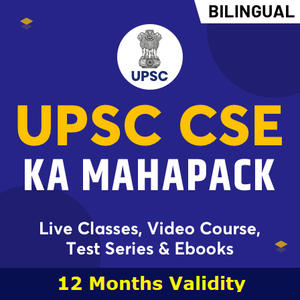Table of Contents
Activist-author Annabhau Sathe- Relevance for UPSC Exam
General Studies I- Modern Indian History.
In News
Maharashtra’s Deputy Chief Minister and other leaders are in Moscow to unveil the statue of Lok Shahir (balladeer) Annabhau Sathe at the All-Russia State Library for Foreign Literature.
Sathe’s work was immensely inspired by the Russian revolution and the Communist ideology.He was a member of the Communist Party of India (CPI), and featured among the selected authors from India whose work was translated in Russian.
Who was Annabhau Sathe?
- Tukaram Bhaurao Sathe, who later came to be known as Annabhau Sathe, was born in a Dalit family on August 1, 1920 in Maharashtra’s Wategaon village in Satara district.
- In 1930, his family left the village and came to Mumbai. Here, he worked as a porter, a hawker and even a cotton mill helper.
- In 1934, Mumbai witnessed a workers’ strike under the leadership of Lal Bawta Mill Workers Union in which he participated.
- During his days at the Matunga Labour Camp, he got to know R B More, an associate of Dr Babasaheb Ambedkar in the famous ‘Chavdar Lake’ satyagraha at Mahad, and joined the labour study circle.
- Being a Dalit, he was denied schooling in his village. It was during these study circles that he learned to read and write.
Anna’s work
- Sathe wrote his first poem on the menace of mosquitoes in the labour camp.
- He formed Dalit Yuvak Sangh, a cultural group and started writing poems on workers’ protests, agitations.
- The group used to perform in front of the mill gates.
- Progressive Writers Association was formed at the national level at the same time with the likes of Premchand, Faiz Ahmad Faiz, Manto, Ismat Chugtai, Rahul Sankrutyayan, Mulkraj Anand as its members.
- The group would translate the Russian work of Maxim Gorky, Anton Chekhov, Leo Tolstoy, Ivan Turgenev into Marathi, which Sathe got hooked on.
- It not only had an ideological impact on him, but inspired him to write street plays, stories, novels etc. In 1939, he wrote his first ballad ‘Spanish Povada’.
Rise of Annabhau
- Sathe and his group travelled across Mumbai campaigning for workers’ rights.
- Out of the 49 years that he lived, Sathe, who began writing only after the age of 20, churned out 32 novels, 13 collections of short stories, four plays, a travelogue and 11 povadas (ballads).
- Several of his works like ‘Aklechi Goshta,’ ‘Stalingradacha Povada,’ ‘Mazi Maina Gavavar Rahili,’ ‘Jag Badal Ghaluni Ghav’ were popular across the state.
- Almost six of his novels were turned into films and many translated into other languages, including Russian.
- His ‘Bangalchi Hak’ (Bengal’s Call) on the Bengal famine was translated into Bengali and later presented at London’s Royal Theatre.
- His literature depicted the caste and class reality of Indian society of that time.
Left leanings
- Sathe’s work was influenced by Marxism, but at the same time he brought out the harsh realities of the caste system.
- In 1943, he formed the Lal Bawta Kala Pathak.
- The group toured across Maharashtra presenting programmes on caste atrocities, class conflict, and workers’ rights.
- He dedicated his most famous novel Fakira to Dr Ambedkar.
Russian connection
- He was once called the Maxim Gorky of Maharashtra.
- He was immensely inspired by Gorky’s ‘The Mother’ and the Russian revolution, which was reflected in his writings.
- He travelled to Russia in 1961 along with a group of other Indians.
The deserved recognition
- Sathe belonged to the Matang community among Dalits.
- With the Left failing to claim his artistic legacy, Sathe is now restricted as a symbol of a particular community.
- The right wing is angling to claim the credit for making Sathe a global icon.
- Installing Sathe’s oil painting at the Indian consulate at Moscow also shows that the central government is using this occasion to increase cultural dialogue between two countries.




 TSPSC Group 1 Question Paper 2024, Downl...
TSPSC Group 1 Question Paper 2024, Downl...
 TSPSC Group 1 Answer key 2024 Out, Downl...
TSPSC Group 1 Answer key 2024 Out, Downl...
 UPSC Prelims 2024 Question Paper, Downlo...
UPSC Prelims 2024 Question Paper, Downlo...
